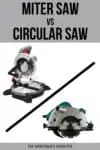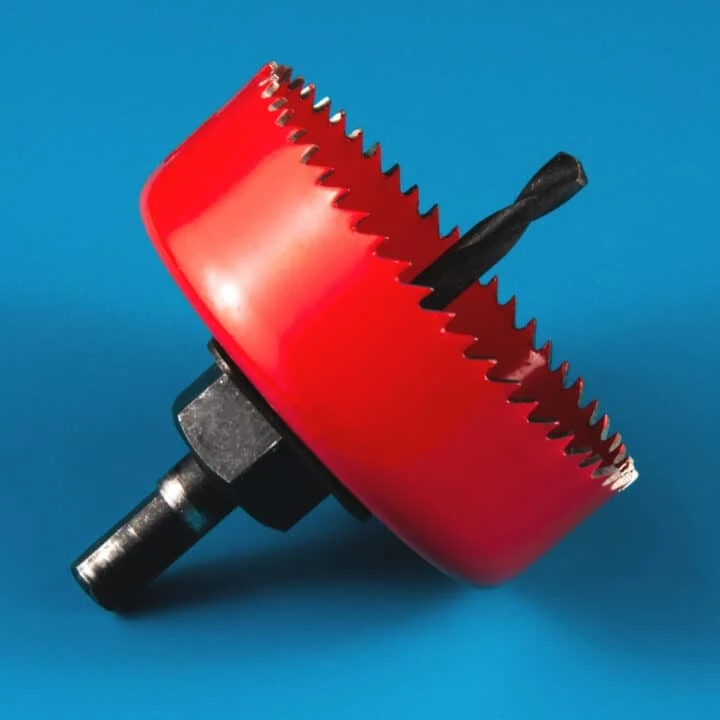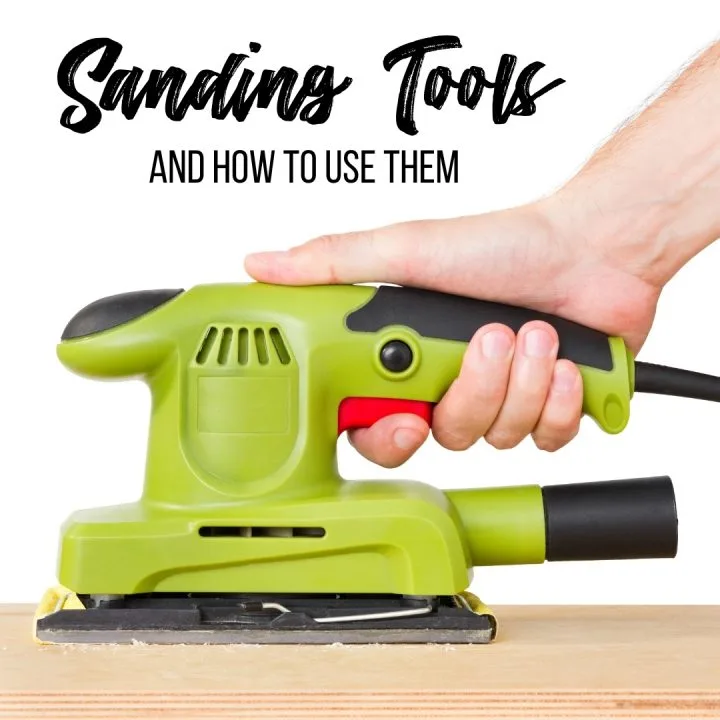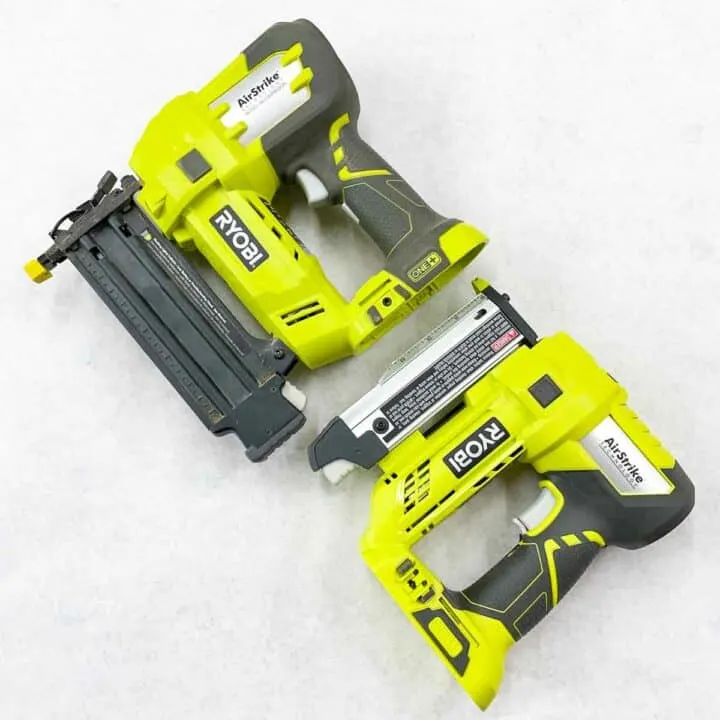What's the difference between a miter saw vs a circular saw? Find out how each tool cuts wood, and which one is right for you!
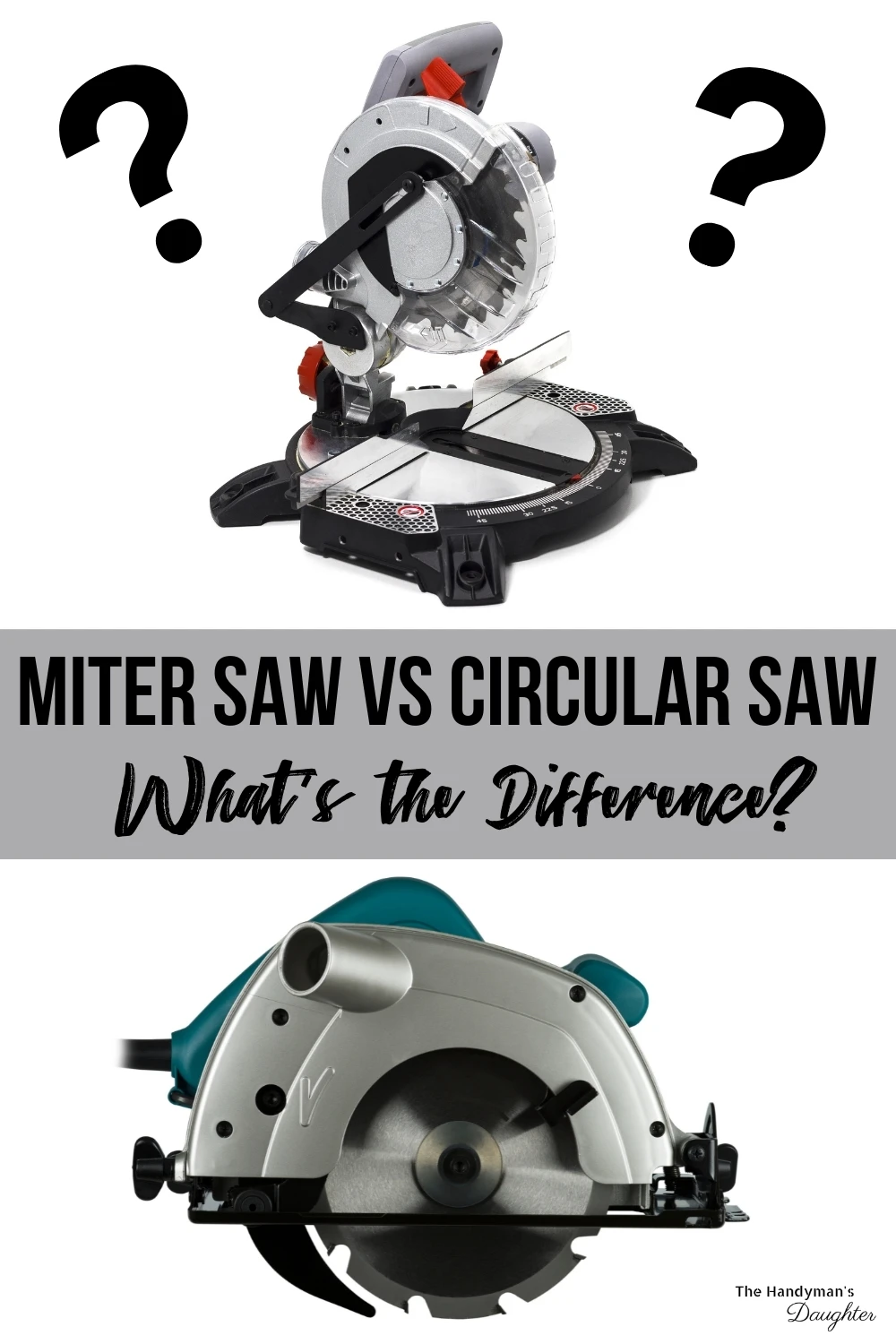
Are you curious about the difference between a miter saw and a circular saw? Are you trying to decide which power tool you should buy first? No worries! In this article, I'll share the information you need to make the right decision.
Miter saws and circular saws both have a toothed, circular blade that can be used to cut wood, PVC and even aluminum. While there is some overlap between these two power tools, there are also some important differences.
Want to know the difference between a jigsaw and a circular saw? Check out this article!
Let's jump right in!
This post contains affiliate links for your convenience. Purchases made through these links may earn me a small commission at no additional cost to you. Please visit my disclosures page for more information.
Differences Between a Miter Saw and a Circular Saw
A miter saw can do most of the same tasks as a circular saw, but both tools have their strengths and weaknesses.
- A miter saw is stationary and the blade is pulled downward onto the wood, while a circular saw is handheld and the blade is pushed through the wood.
- A circular saw excels at breaking down sheet goods, and a miter saw is best for cutting down longer boards.
- A miter saw can make more accurate cuts, due to the handheld nature of the circular saw.
- A circular saw is less expensive than a miter saw, and it's more portable.
- A miter saw is safer to use than a circular saw.
- A circular saw can make both rip cuts along the length of a board and cross cuts across the width of a board, but a miter saw can only make cross cuts.
What is a Miter Saw?
A miter saw is a stationary cutting tool that makes cross-grain cuts. The miter saw is sometimes known as a "chop saw," because you bring the blade down onto the wood in a chopping motion.
As their name implies, these saws are used for making miter cuts, or an angled cut. For example, a 45 degree miter cut is used for the corners of a picture frame.
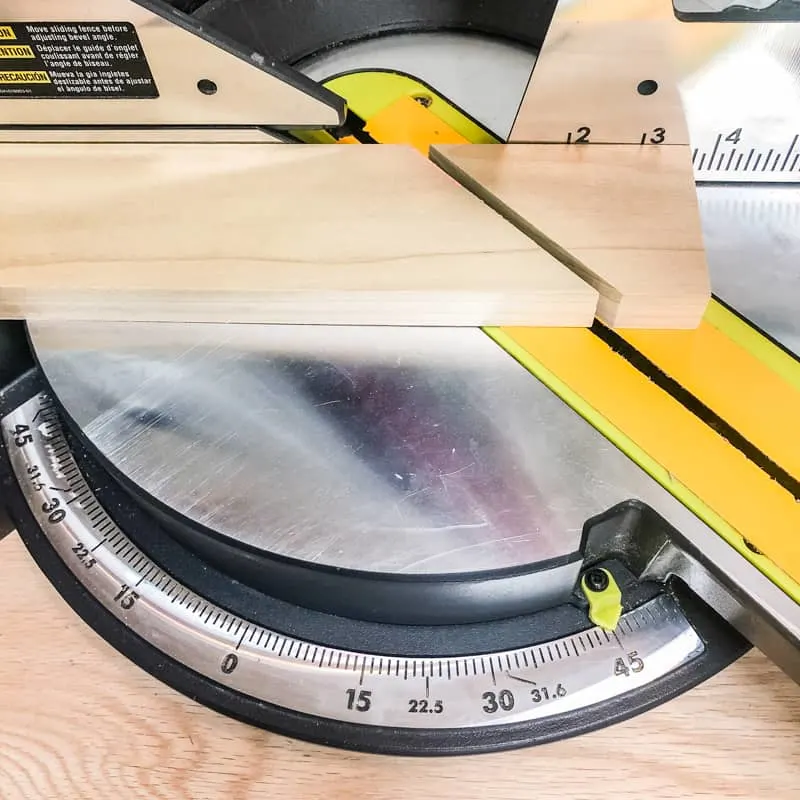
Miter saws are also used to make bevel cuts. A bevel cut will create an angle along the end of the board. Learn more about how to use a miter saw here!
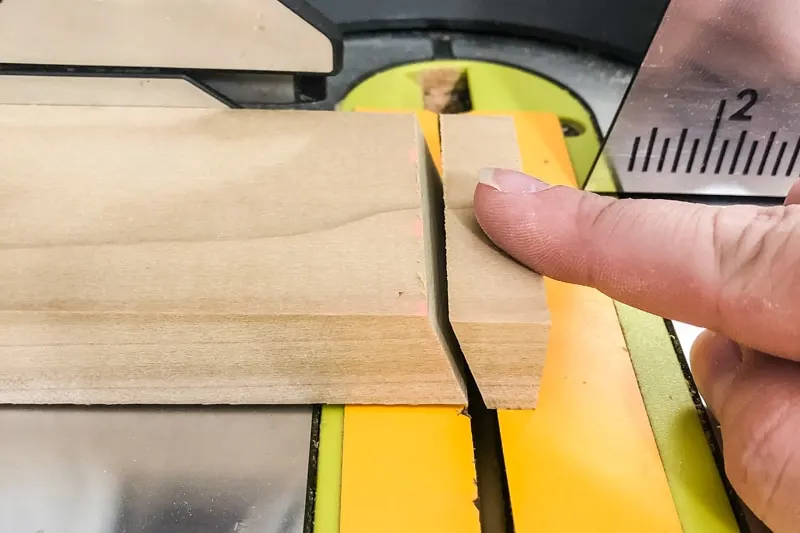
Types of Miter Saws
Let's go over a few different types of miter saws. You can find several of these features all in one saw!
- Single bevel - A single bevel miter saw can make miter cuts and bevel cuts in a single direction.
- Double bevel miter saw - The double bevel miter saw can make bevel cuts in both directions. This feature speeds up the process when you need to make a lot of angled cuts. Learn the difference between a single bevel and dual bevel miter saw here!
- Compound miter saw - A compound miter saw allows you to make compound cuts. Compound cuts are when you make a miter cut and a bevel cut at the same time.
- Sliding miter saw - This type of miter saw slides on a bar to allow the blade to move forward instead of just straight down. Sliding miter saws are capable of cutting wider boards than non-sliding models.
Miter Saw Blade Size
The size of your miter saw blade will determine how big of a board you're able to cut. But bigger isn't always better! A small miter saw is more portable, and is easier to store away when you're not using it.
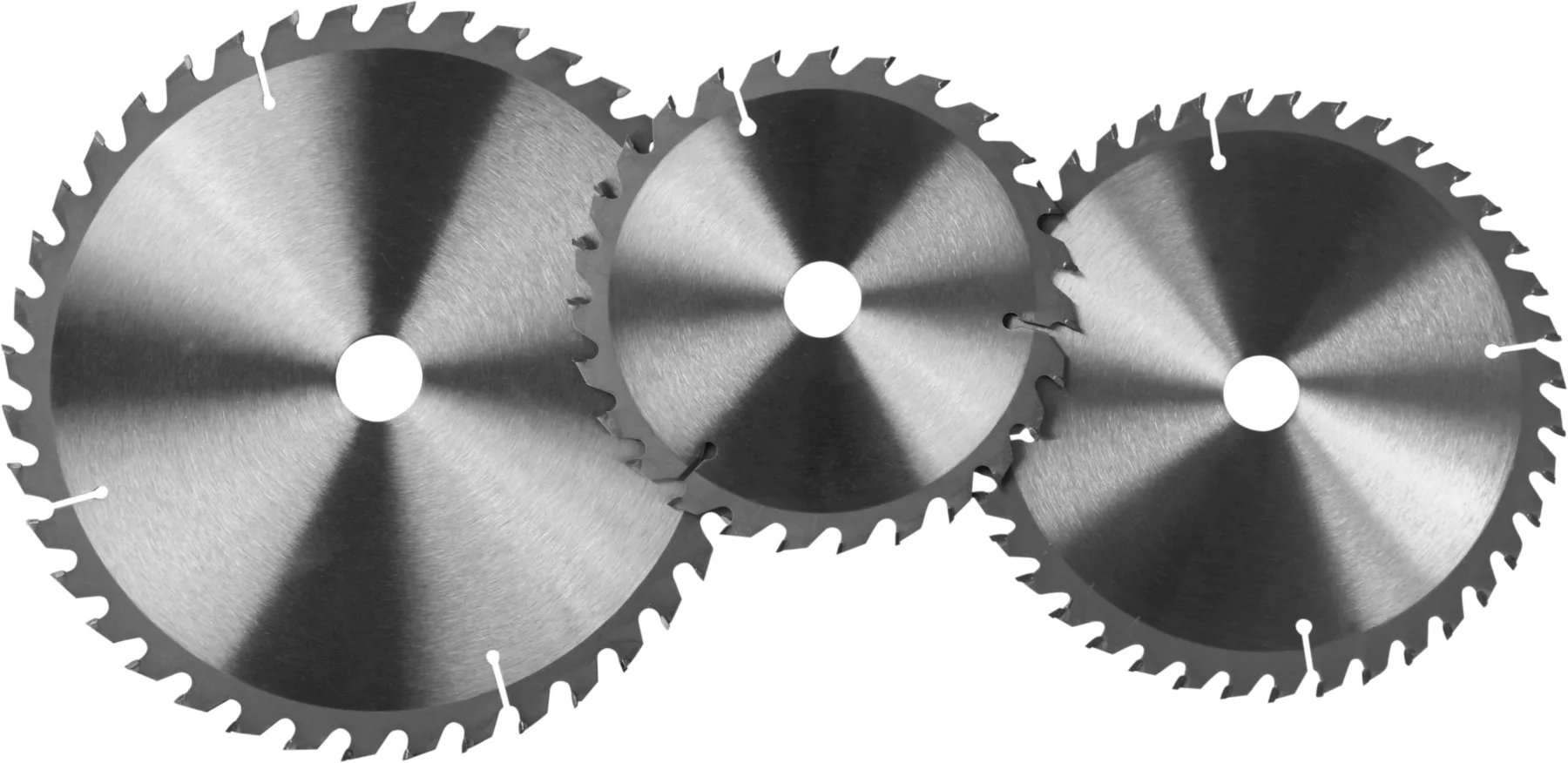
You can purchase small miter saws with a 7 ¼" blade, which are great for the occasional DIY-er. However, the reduced cutting capacity of a smaller blade can be limiting.
A ten-inch blade is better suited for most jobs. This size is most common, and can be found in a variety of price points.
A 12-inch blade gives you the most cutting capacity (up to 14" wide), but are the most expensive and the heaviest of the bunch.
Frequently Asked Question About Miter Saws
Let's answer some of the most commonly asked questions about miter saws.
Are Cheap Miter Saws Worth it?
When looking for a miter saw, you want to get the most value. Both inexpensive and expensive miter saws can be worth it. It all depends on what you need.
If you're just cutting some trim, and that's all you will use your miter saw for, then it might make sense to purchase an inexpensive saw with a small blade.
Note: It's never worth it to buy a low-quality miter saw. My first miter saw was a cheap Harbor Freight model, and it never cut straight! Save yourself some frustration and get a better quality saw!
When Should I Use a Miter Saw?
Miter saws work well when you need to make multiple cuts on standard lumber, like 2x4 boards. The miter saw is also useful for cutting trim, deck planks, and dowels. Basically, any long, thin wood can easily be cut at the miter saw!
When you use a miter saw stop block, you can cut dozens of identical pieces without measuring each one. With a circular saw, you'll have to measure, mark and line up your blade each time you want to make a cut.
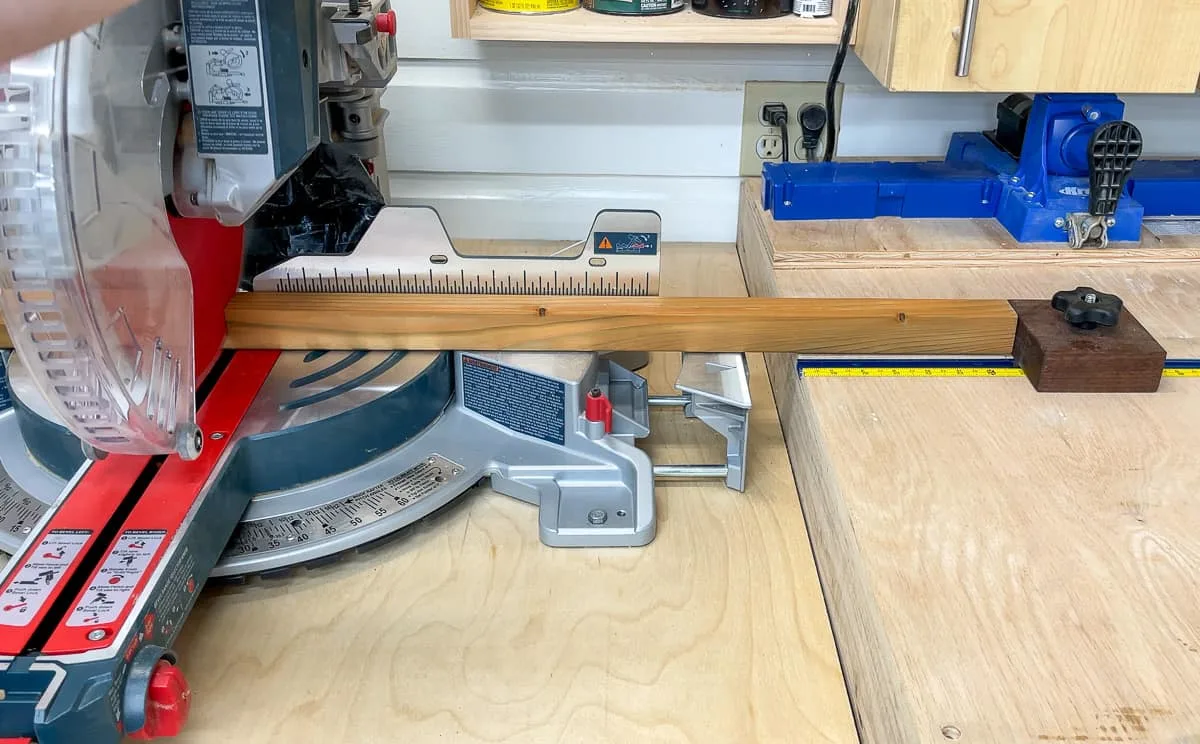
Wider sheet goods like plywood can't be cut at a miter saw unless it's already in strips that are narrower than the cutting capacity of the saw. This job is better suited for a circular saw or table saw.
Do I need a miter saw stand?
Some miter saws come with their own stand, or you can purchase one that fits your particular model. It's much more comfortable to work with the saw at a workbench, but you can always use the floor in a pinch!
If you plan to use a miter saw on a regular basis, you may want to consider building yourself a miter saw stand for the workshop or garage. It will help support the board on both sides of the blade, and makes it easier to set up a stop block system. I had a mobile miter saw stand for many years, and recently built this amazing miter saw station that gives me tons of storage underneath!
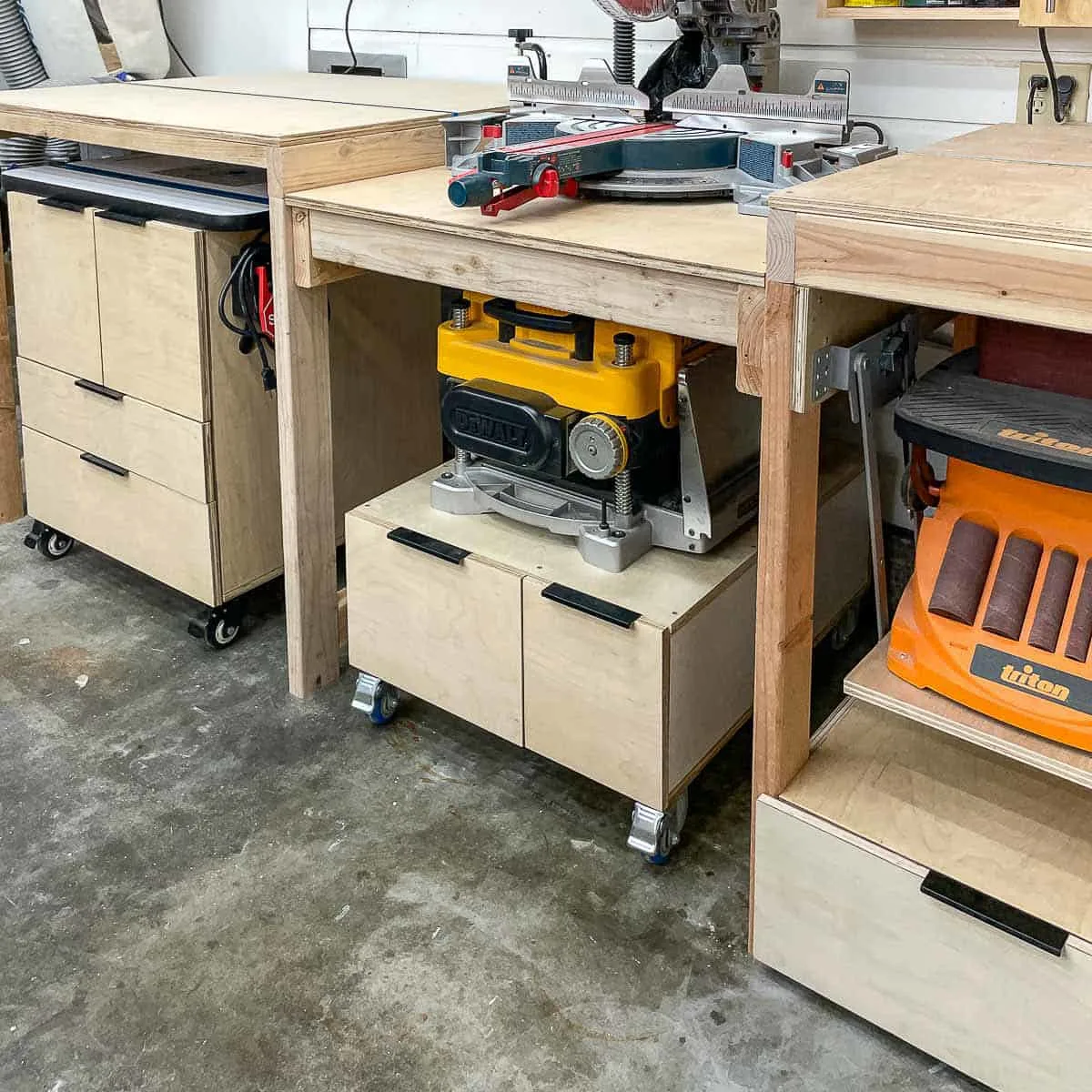
What is a Circular Saw?
A circular saw is a battery powered or corded cutting tool used for rip cuts, bevel cuts, and crosscuts.
The circular saw is handheld. Some people think of a circular saw similar to a table saw; however, with a circular saw, you push the saw, and with a table saw, you push the material.
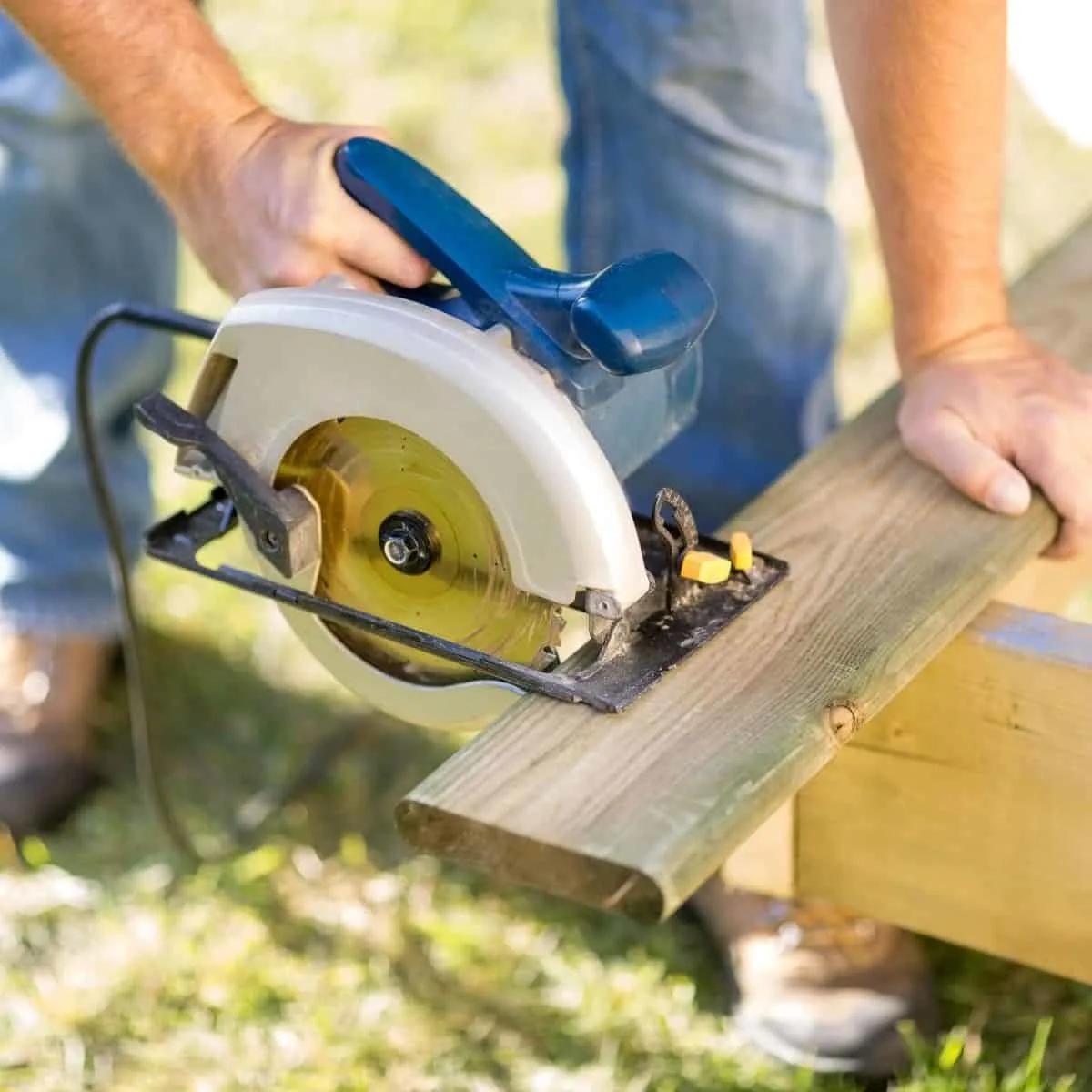
Types of Circular Saws
While all circular saws have the same basic design, with a flat plate on the bottom and a blade on the side, there are three main types.
Miniature circular saws have blades under 5" in diameter, and have a handle that extends behind the motor instead of on top. They have a limited cutting depth, but most can cut a 2x4 or plywood. This type of saw is perfect for:
- Keeping in your car to break down sheet goods in the parking lot of the home improvement store.
- Occasional DIY-ers who only need to make a few cuts every once in a while.
- Contractors who want a lightweight alternative for cutting boards up in the air.
Standard size circular saws range from 7 ¼" to 10" diameter blades. These are the most common type, and are great for all sorts of cutting tasks.
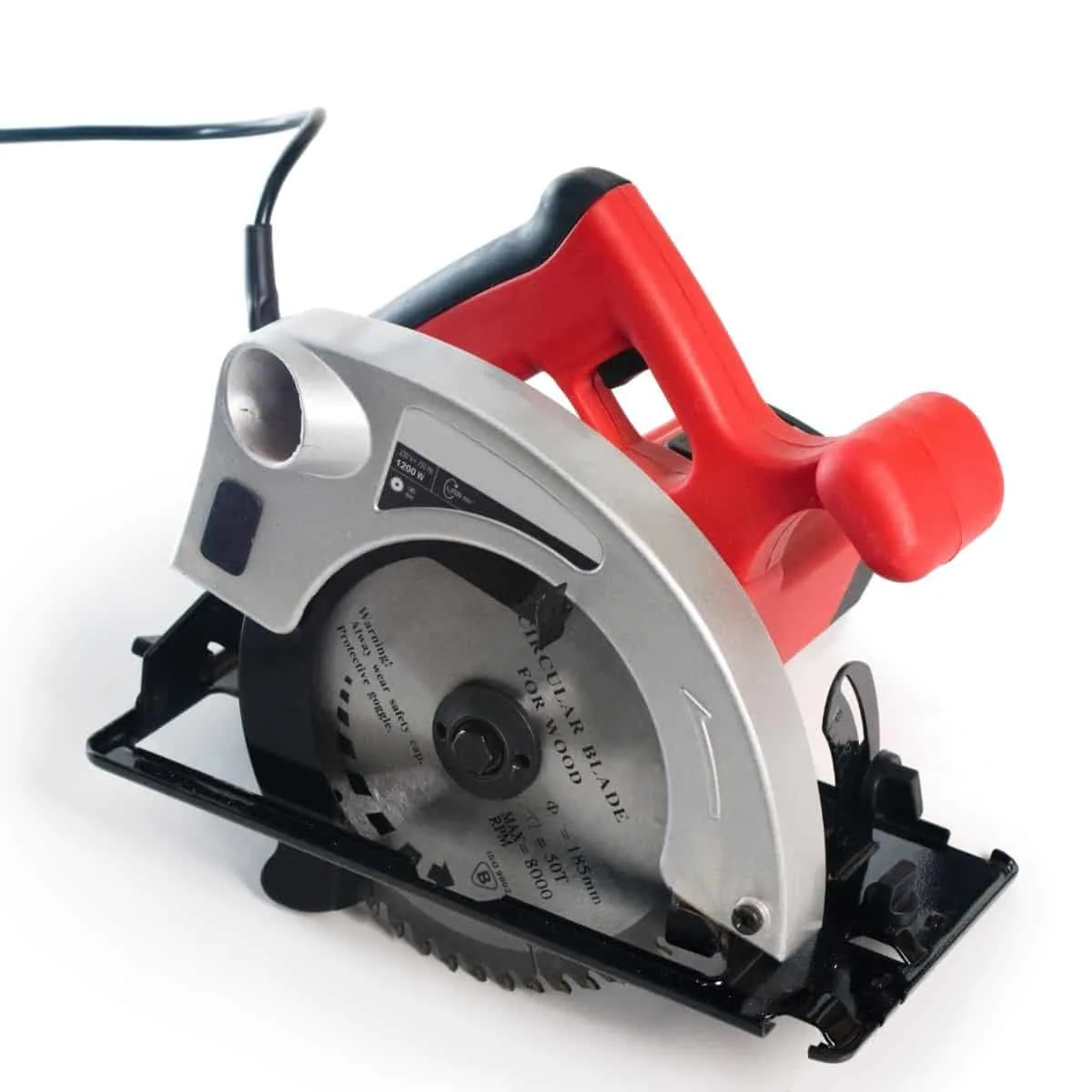
Track saws are a special kind of circular saw that runs on a dedicated track system for more straight, accurate cuts. Tracks saws are much more expensive, but they deliver finish quality cuts and can replace a miter saw, circular saw AND table saw for most applications. You can learn more about the difference between a track saw and a circular saw here!
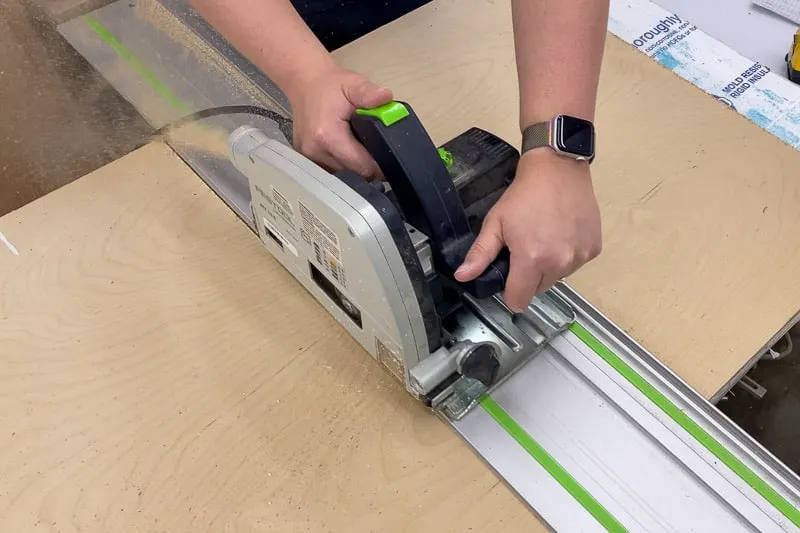
If you're struggling to get straight cuts with your circular saw, but don't want to shell out the cash for a track saw, try making yourself a circular saw straight edge jig!
Circular Saw Blades
Circular saw blades can have a high or low tooth count. Generally speaking, a lower tooth count is good for fast, rough cuts. However, if you want less tear out and splinters at the edge of your board, I recommend using a blade with a higher tooth count. Circular saw blades come with 24, 60, and even 120 tooth blades.
The most common blade size for a circular saw is 7 ¼ inches, but you can also find smaller ones that are easier to handle. These blade sizes aren't interchangeable, so you should always use the correct one for the saw you have.
Frequently Asked Questions About Circular Saws
Let's go over some common circular saw questions.
When Should I Use a Circular Saw?
Many woodworkers and DIYers love circular saws because they are incredibly versatile. Unlike miter saws, circular saws are easily portable and can make long rip cuts.
Many people use circular saws when cutting larger boards down to size - for instance, a large sheet of plywood or a 2x12 that would be difficult to cut with a smaller miter saw.
What Should I Avoid Doing with a Circular Saw?
Avoid operating a circular saw without a blade cover. Some people have removed these blade covers because they believe they "get in the way." When used properly, blade covers do not get in the way. These covers are there to protect your fingers!
Are Circular Saws Dangerous?
Yes. If used irresponsibly or without educating yourself on how to use them, circular saws can be very dangerous. Kickback can occur when the blade gets pinched between the two halves of the board. The saw could drop through the cut and injure your foot or leg. Or your fingers could just get in the way of the blade. All these safety considerations should be kept in mind when using this tool.
Why Does My Circular Saw Get Stuck?
If you're using two sawhorses to support both ends of the board while cutting through the middle, this can cause the wood to pinch the blade. I recommend laying your board on a large slab of rigid foam insulation. This provides support without pinching the blade, and also prevents your work surface from getting cut up.
Second, you might have a dull blade. Be sure your blade is sharp and that it has the right tooth count for the material you're working with.
Finally, your circular saw may not be very powerful, or the battery may be wearing down. If so, charge the battery or upgrade to a more powerful saw.
Now that you know the difference between a miter saw vs circular saw, you can choose the right one for you with confidence! Both have their pros and cons, and you may end up buying both for your workshop for different uses!

